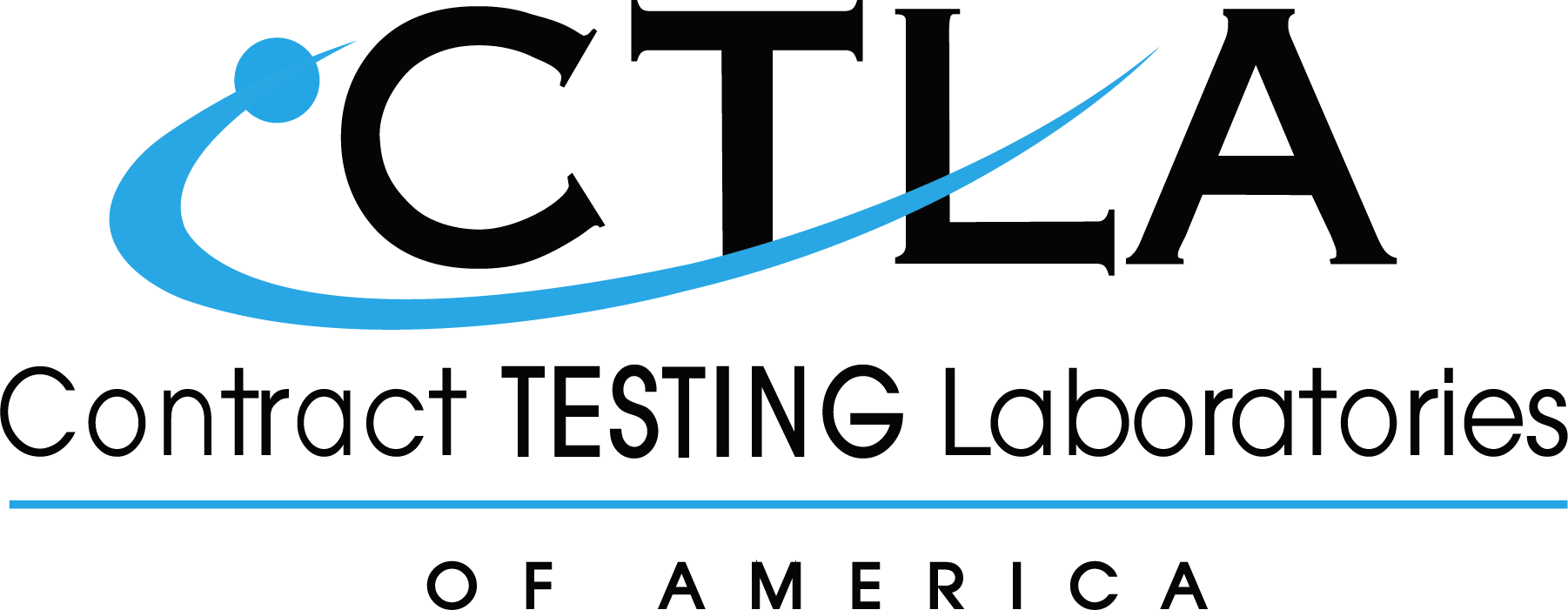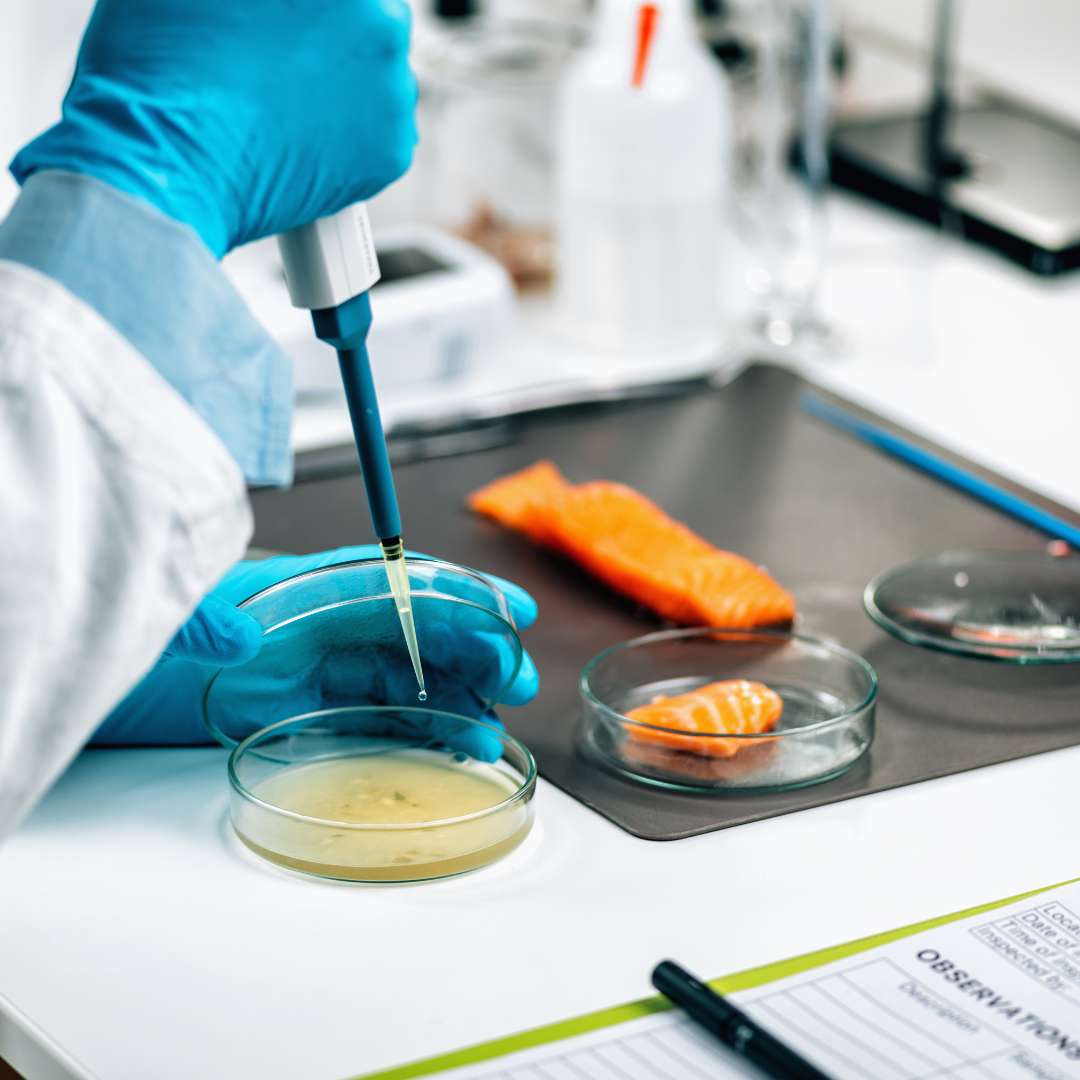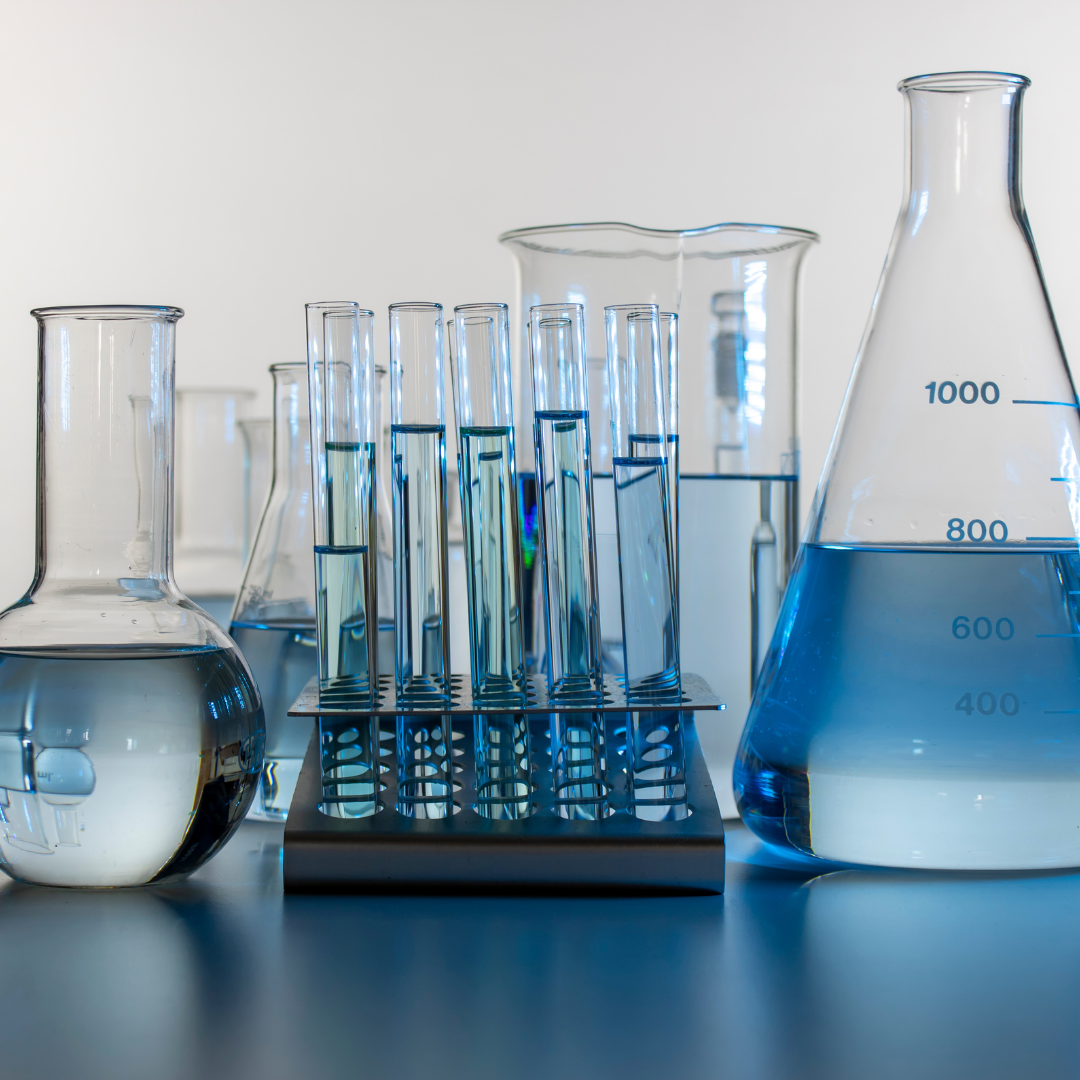
Advantages of Gas Chromatography
Advantages of Gas Chromatography
Since its development in 1952, gas chromatography (GC) has been (and remains) one of the most widely used techniques in analytical chemistry. GC separates and quantifies components in a sample mixture and is used globally to analyze many different types of organic compounds.
GC testing is used in research, forensics, environmental safety, healthcare, food analysis, and quality control.
Understanding the process behind GC, its advantages and disadvantages, and its partner techniques, can help you determine if it is the right technique for your testing needs.
CG System Components
There are three parts to a gas chromatography system: the sample injection unit, the column, and the detector.
The sample is vaporized in the sample injection unit and is separated into the various components in the column. The detector then analyzes these components as they elute off the column.
How Gas Chromatography Works
Like all chromatography techniques, GC has a stationary phase and mobile phase. The separation achieved depends on the affinity of the mixture components for the stationary phase.
The stationary phase can either be a solid (gas-solid chromatography or GSC) or a liquid (gas-liquid chromatography or GLC). GLC is more common than GSC.
The mobile phase, or carrier gas, is typically an unreactive gas. Argon, nitrogen, and helium are popular mobile phases. Hydrogen can also be used, but it is rare given its flammable, reactive nature.
During GC, the sample is vaporized in the injector, which is at the beginning of the column. The mobile phase then carries it through the column. The rate at which sample components travel through the column depends on the vapor pressure and gas flow through the column and the affinity of the sample components for the stationary phase.
Since different components have different affinities for the stationary phase, they move at different rates, and thus, separation occurs. The detector then creates a spectrum (chromatogram) as it detects molecules leaving the column.
Chromatograms display the time and intensity of eluting sample components. Where components are present, a ‘peak’ appears on the chromatogram. Each peak corresponds to one sample component if there is good separation.
The time at which a sample component elutes from the column identifies it (known as the retention time) by comparing it to the sample standard. The area under the peak corresponds to the quantity, or concentration, of the sample component.
Improving Separation
A sample must be well separated to get the best results from GC analysis. Many factors, such as polarity, temperature, and column length influence the separation. Adjustments to GC parameters often occur in real time.
Polarity Differences and Similarities
One of the most fundamental rules of chemistry is that molecules with similar intermolecular forces like to interact with each other. So, polar substances interact well with other polar substances, and nonpolar substances interact well with other nonpolar substances.
The more similar the polarity of the stationary phase and a sample component, the more attracted they are, and the longer it will take to elute the sample component off the column. The stationary phase is carefully chosen to exploit the differences in component polarity to achieve the best separation.
Temperature and Flow Rate
Increasing the temperature and flow rate pushes the sample through the column at a faster rate. As a result, the vaporized sample has less time to interact with the stationary phase. Thus, the sample components elute from the column quicker but are closer together and less separated, potentially causing co-elution of sample components.

Column Length
Generally, longer GC columns result in better separation. However, they also increase retention times and can increase peak widths in the resulting chromatogram. The longer any particular component spends on the column, the wider the peak width of the resulting peak in the chromatogram becomes.
Sample Injection Methods
Liquid and solid GC samples are dissolved in a solvent with a low boiling point, such as methanol or acetone. The sample must be completely dissolved before injection. Gasses are injected into the column via a “headspace” injector and liquids through direct injection.
There are several different injection methods. The most common are split and splitless.
Split injection means that the GC system discards some of the sample injected; only a fraction goes through the column. Although this may seem wasteful, it prevents overloading the column with a highly concentrated sample. Overloaded columns do not separate compounds well and have chromatograms with poor resolution. It may also lead to contamination or matrix effects in future chromatograms from bleed over from previous runs.
In contrast, splitless injection is better for dilute samples. In this case, the GC system does not siphon off any of the sample before injection into the column.
Types of Columns
There are two kinds of GC columns: packed and capillary.
Packed columns are more traditional than capillary columns. They are filled with individual silica particles coated in the stationary phase. Packed columns are usually about 2-4 meters in length and 2-4 mm in diameter. Although they cost less, they are less effective at separating compounds and are generally not used in GC analysis, usually because they are too short to achieve adequate separation.
Capillary columns are more commonly used today for GC. Capillary columns are made of silica instead of packed with silica beads.
The stationary phase coats the inside of the silica tube. They are usually 15-100 meters long and around 0.4 mm in diameter. Capillary columns are much better for separating complex mixtures than packed columns.
Detectors
Obtaining useful information from GC would be impossible without a detector. GC uses many kinds of detectors.
Mass Spectrometry (MS)
Pairing GC with MS is becoming increasingly common. In Gas Chromatography-Mass Spectrometry (GC-MS), components are ionized as they elute off the GC column.

The ionized molecules break down into charged fragments. The detector determines the mass-to-charge ratio of the fragments. The mass-to-charge ratio reveals both the identity and the concentration of the eluting substance.
GC-MS instruments have a detection limit of 1-10 ng or less with the correct scanning mode.
Flame Ionization Detector (FID)
FID is an ideal detector for organic molecules since that is all it detects. FID uses a hydrogen flame to oxidize carbon in the sample. A collector electrode attracts the ions formed to an electrostatic field, and the ions are detected.
FID has a detection limit of 0.1 ng.
Thermal Conductivity Detector (TCD)
TCD works by detecting the difference in filament temperature caused by the thermal conductivity of the carrier gas and sample component.
Although it can detect all compounds (except the carrier gas), TCD is typically only used when FID will not work because of its poor detection limit of 10 ng.
Electron Capture Detector (ECD)
ECD is a highly sensitive detector for electrophilic compounds, such as organic halogen compounds, organic metal compounds, etc.
ECD uses radiation from a radioactive isotope to knock an electron off the carrier gas (which in this case is typically nitrogen). A constant ion current carries the ions to a collector.
If an electrophilic compound is present, they take longer than the electrons to reach the collector. The voltage is increased to maintain a constant ion current. These voltage changes detect the presence and identity of components.
What Compounds does GC Work Best For?
Only compounds known as volatile compounds are suitable for analysis by GC. Volatile compounds are those that have a boiling point of less than 400⁰C and that either do not decompose at their vaporization temperature or always decompose by the same amount but do not decompose completely.
GC is difficult or impossible with compounds that cannot be vaporized or are highly unstable, reactive, or absorbent.
Advantages of Gas Chromatography
There are many advantages to using GC analysis.
Since GC parameters are alterable during the analysis, GC quickly obtains optimum resolution.
GC is quantitative, and it is possible to analyze many samples and analytes in the same run.
GC is extremely sensitive and can be paired with many other techniques (most of which allow for nondestructive testing). Additionally, there are many different detection techniques and software capabilities to use with GC.
Many kinds of GC columns and stationary and mobile phases exist, creating numerous combinations for fast and accurate analysis.
In addition, columns are reusable. Capillary columns can be cleaned in most cases, although after a predetermined number of uses, they must still be replaced, as with any other chromatography column.
Testing with CTLA
Gas Chromatography is one of the most effective techniques in analytical chemistry.
That is why CTLA uses it to ensure your supplements or food products are safe for consumption and meet FDA requirements.
CTLA performs GC with an FID detector on gas and liquid samples. We use polar and nonpolar capillary columns, which provide us the versatility to test nearly any volatile compound. We also use our equipment to test for fats and residual solvents. Helium is our carrier gas of choice, and our instrument can perform either split or splitless injection.
In addition, CTLA is an ISO/IEC 17025:2017 accredited testing facility to meet all your analytical testing needs. With our expertise on your side, you can be confident your product is safe and meets applicable regulations.
Contact CTLA today to test our skills - and your product!

The content of CTLA’s website is for information only, not advice or guarantee of outcome. Information is gathered and shared from reputable sources; however, CTLA is not responsible for errors or omissions in reporting or explanation. CTLA gives no assurance or warranty regarding the accuracy, timeliness or applicability of the content.
Sources:
Moore, Sarah. “Applications of Gas Chromatography”. News Medical Life Sciences. 2020. https://www.news-medical.net/life-sciences/Applications-of-Gas-Chromatography.aspx
Raja, Pavan M. V. & Barron, Andrew R. “Principles of Gas Chromatography”. Chemistry LibreTexts. 2021. https://chem.libretexts.org/Bookshelves/Analytical_Chemistry/Physical_Methods_in_Chemistry_and_Nano_Science_(Barron)/03%3A_Principles_of_Gas_Chromatography/3.01%3A_Principles_of_Gas_Chromatography
“What is Gas Chromatography?”. Shimadzu. https://www.ssi.shimadzu.com/service-support/faq/gas-chromatography/what-is-gas-chromatography/index.html
Bartle, Keith D. & Myers, Peter. “History of Gas Chromatography”. ScienceDirect. 2002. https://www.sciencedirect.com/science/article/abs/pii/S0165993602008063
Boudreaux. “Chapter 1: Alkanes”. Angelo State University. https://www.angelo.edu/faculty/kboudrea/index_2353/Chapter_01_2SPP.pdf
Mathias, Jennifer. “A Beginner’s Guide: How to Interpret Gas Chromatography Mass Spectrometry Results”. InnovaTech. 2018. https://www.innovatechlabs.com/newsroom/1841/how-to-interpret-gas-chromatography-mass-spectrometry-results/
“Analysis Results”. Shimadzu. https://www.ssi.shimadzu.com/service-support/faq/gas-chromatography/analysis-results/index.html
Davey, Reginald. “What are the Advantages of Using Gas Chromatography?” Azo Materials. 2021. https://www.azom.com/article.aspx?ArticleID=20552
“How Does Gas Chromatography Work?”. UCLA. 2016. https://www.chem.ucla.edu/~bacher/General/30BL/gc/theory.html
“The Column”. Shimadzu. https://www.ssi.shimadzu.com/service-support/faq/gas-chromatography/columns/index.html
“Detectors”. Shimadzu. https://www.ssi.shimadzu.com/service-support/faq/gas-chromatography/detector/index.html
“Gas Chromatography: What You Need To Know About Its Principles, Types and Working”. LabTraining.com. https://lab-training.com/gas-chromatography/
Chasteen, Thomas G. “Split/Splitless Gas Chromatography Injection”. Shsu. https://www.shsu.edu/~chm_tgc/primers/pdf/GC.pdf
Nichols, Lisa. “Sample Preparation for Gas Chromatography”. Chemistry LibreTexts. 2022. https://chem.libretexts.org/Bookshelves/Organic_Chemistry/Organic_Chemistry_Lab_Techniques_(Nichols)/02%3A_Chromatography/2.05%3A_Gas_Chromatography_(GC)/2.5F%3A_Sample_Preparation_for_Gas_Chroma







